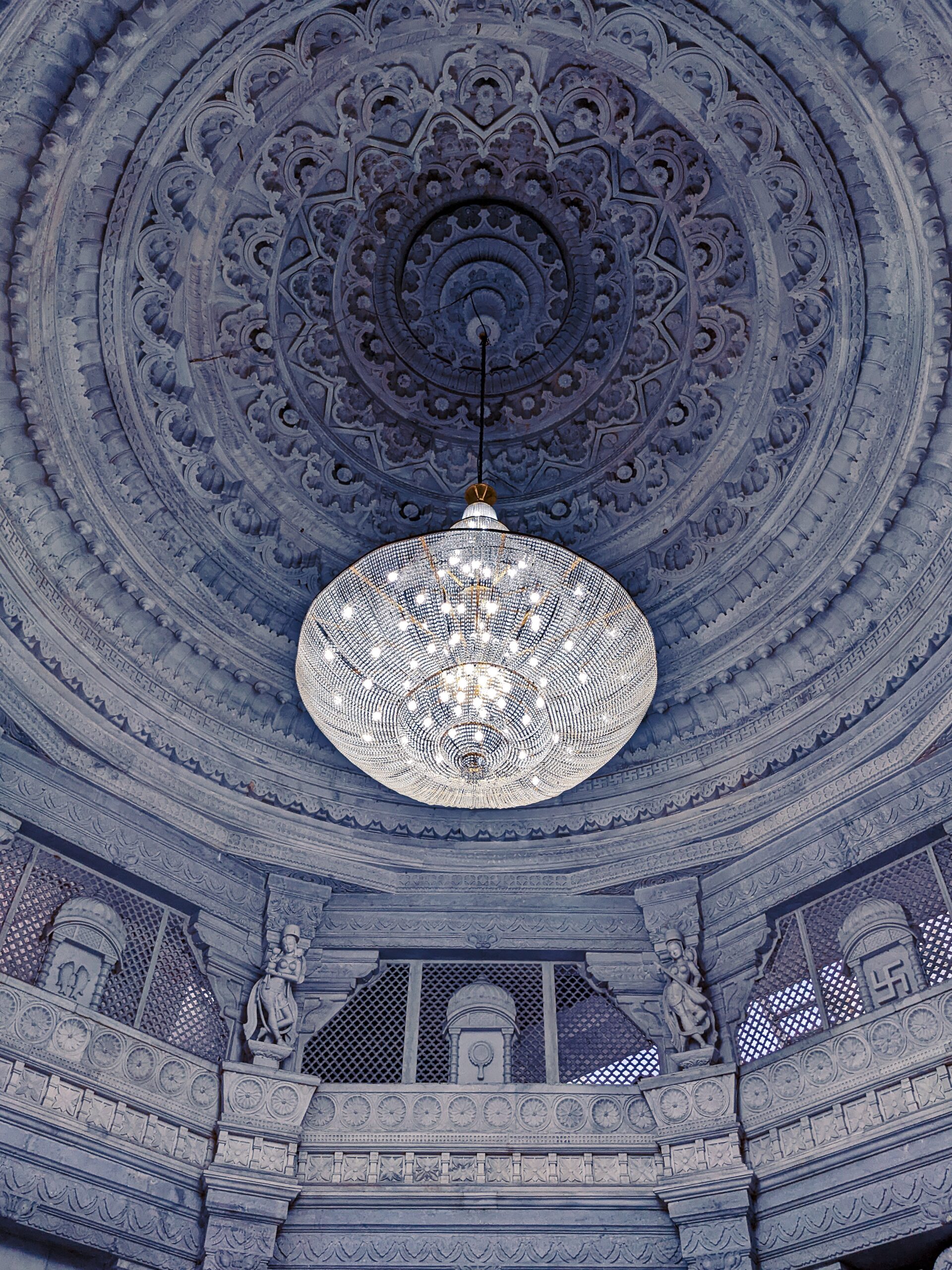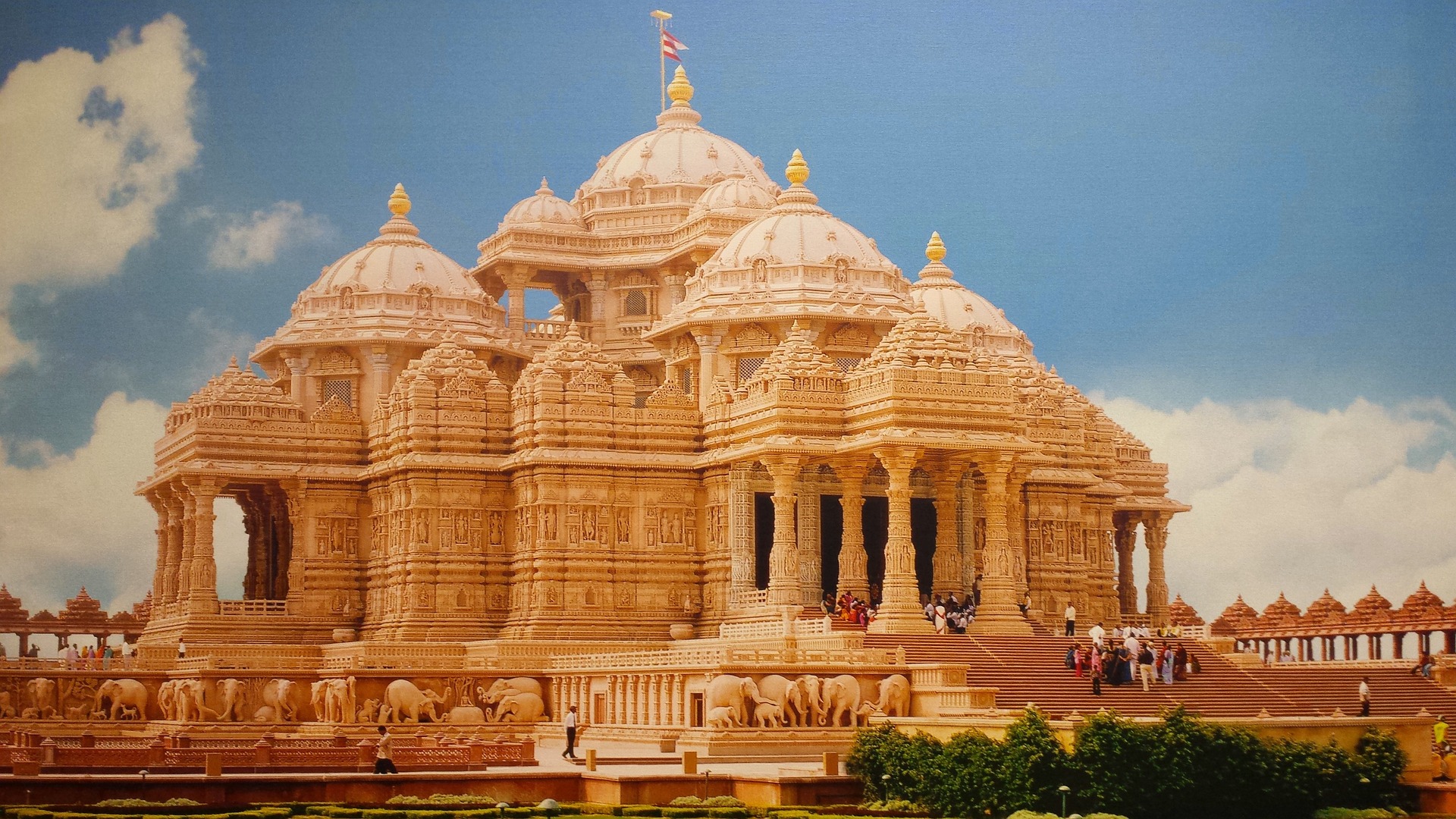AksharDham Temple: A Shrine of Eternal Beauty and Divine Spirituality
The AksharDham Temple of Delhi is a magnificent Hindu temple complex located on the banks of the Yamuna River in the eastern part of the city. It was inaugurated in November 2005 by the then President of India, Dr. APJ Abdul Kalam, and has since become one of the most popular tourist destinations in the city.
History of AksharDham
Akshardham gets its name from the combination of two terms – “Akshar,” which signifies eternal, and “Dham,” which means abode. Therefore, Akshardham refers to the dwelling place of the eternal being. The Swaminarayan Akshardham Temple in Delhi was founded on the vision of Shri YogijiMaharaj, the spiritual leader of Bochasanwasi Shri AksharPurushottam Swaminarayan Sanstha (BAPS) in 1968. However, it was his successor, Pramukh Swami Maharaj, who oversaw the construction of the temple. The temple complex was erected on 90 acres of land, with 60 acres granted by the Delhi Development Authority and 30 acres by the Uttar Pradesh Government. Construction began in 2000 and was completed in just five years.
The Akshardham Temple, situated on the banks of the Yamuna River, is one of the largest temples in India and was opened to the public on November 6th, 2005. Its inauguration was attended by prominent individuals including Dr. A.P.J. Abdul Kalam, L.K. Advani, B.L. Joshi, and Dr. Manmohan Singh, the then-Prime Minister of India. The temple was constructed by BAPS with the help of over 8,000 volunteers who contributed a total of 300,000,000 volunteer hours to the project.
The architecture of the Akshardham temple
The Akshardham Temple in Delhi showcases the timeless beauty of Hindu architecture that flourished in different parts of India during ancient and medieval times. The centerpiece of the complex is the AkshardhamMandir, built according to the principles of Pancharatra Shastra and Vastu Shastra. It stands tall at 141 feet, spans 316 feet in width, and extends 356 feet in length.
The temple boasts of more than 234 intricately carved pillars, 20 quadrangle spires, 9 ornate domes, and over 20,000 sculptures that depict revered spiritual figures from India. The walls and ceilings of the temple are adorned with intricate carvings of deities, flowers, dancers, and musicians.
Every element of the Akshardham Temple complex is a masterpiece of art and craftsmanship, showcasing the unparalleled skill of the builders. The temple is constructed using Italian Carrara marble and Rajasthani pink sandstone. Surrounding the temple are vast gardens, a courtyard designed in a stepwell style, numerous water features, and other stunning structures.
Inside of AksharDham Temple
The GARBHAGRUH
The garbhagruh of the Akshardhammandir serves as the inner sanctum, housing Bhagwan Swaminarayan and his divine successors – Gunatitanand Swami, BhagatjiMaharaj, ShastrijiMaharaj, YogijiMaharaj, and Pramukh Swami Maharaj. These gurus, being manifestations of Aksharbrahma, are eternal servants of God and represent ideals of saintliness and devotion. They reside in the garbhagruh, continuously offering worship and service to Bhagwan Swaminarayan. In addition, the garbhagruh houses sanctified items from Bhagwan Swaminarayan’s time on Earth, available for darshan directly behind the garbhagruh. Altars dedicated to other important Hindu deities of Sanatana Dharma, such as Shri Sita-Ram, Shri Radha-Krishna, Shri Lakshmi-Narayan, and Shri Shiv-Parvati, are also located around the garbhagruh.

Mandapams
The Akshardhammandir’s interior comprises nine mandapams, each with a distinctive theme. These mandapams are adorned with intricately carved murtis and pillars, and feature distinct domes and ceilings. As one journeys through the mandapams, they encounter famous devotees, revered avatars, and joyful celestial beings. The exquisite designs and intricate carvings in the mandapams evoke contemplation of God’s indescribable magnificence and the loveliness He inspires in all creation.
The Mandovar
The Mandovar is the outer facade of a traditional stone temple, and the Swaminarayan Akshardham temple boasts the largest and most intricately carved Mandovar built in India in the last 800 years. The Mandovar stands at 25 feet high and 611 feet long, featuring 200 sculptured stone figures of various Hindu deities, sages, and devotees. The base of the Mandovar, known as the jagati, showcases carvings of animals such as elephants, lions, and vyal, followed by carvings of flowers, and sculptures of avatars, sages, and devotees in the middle layer known as vibhuti. The top layer, known as samarans, encourages individuals to strive for spiritual growth.
The Narayan Peeth
The Narayan Peeth is the layer of the Swaminarayan Akshardham temple that features three 60 feet long bronze relief panels depicting divine incidents from the life of Bhagwan Swaminarayan. This layer is where the faithful perform pradakshinas or circumambulations, walking clockwise around the mandir to reinforce the belief that God should be the center of one’s life.
The GajendraPeeth
The GajendraPeeth or Elephant Plinth, symbolically representing the shoulders of the temple, showcases stories and legends of elephants with nature, humans, and God. The creative adaptation of depicting elephants in various scenarios honors these grand and gentle animals while also sharing messages of peace, beauty, and gentleness.
How to reach there
The AkshardhamMandir metro station, which is located on the Blue Line, is the closest metro station to the Akshardham Temple. To reach this station, you need to switch from the Yellow Line to the Blue Line at Rajeev Chowk. If you are coming from the Indira Gandhi International Airport, you can either take a taxi or take the Yellow Line from the airport and switch to the Blue Line at Rajeev Chowk. Additionally, there are buses available from both the New Delhi station and the airport that can take you to the Akshardham Temple.
All you need to know
| Location | NH 24, AkshardhamSetu |
| Also Known as | Swaminarayan Akshardham |
| Timings | 9:30 am to 8:00 pm; closed on Mondays. |
| Aarti Timings | 10:30 AM and 06:00 PM |
| Temple Entry Fee | Free and Open to All |
| Exhibition Fee | ₹220 for adults (12 years and above); ₹170 for senior citizens (60 years and above); ₹120 for children (4 to 11 years); free for children below 4 years |
| Exhibition Tickets Timings | 10:00 am to 7:00 pm |
| Photography | Not allowed |
| Nearest Metro Station | Akshardham Metro Station |
| Dress Code | Upper wear that covers your upper arms, chest, naval, and shoulders and below knee-length bottoms |
